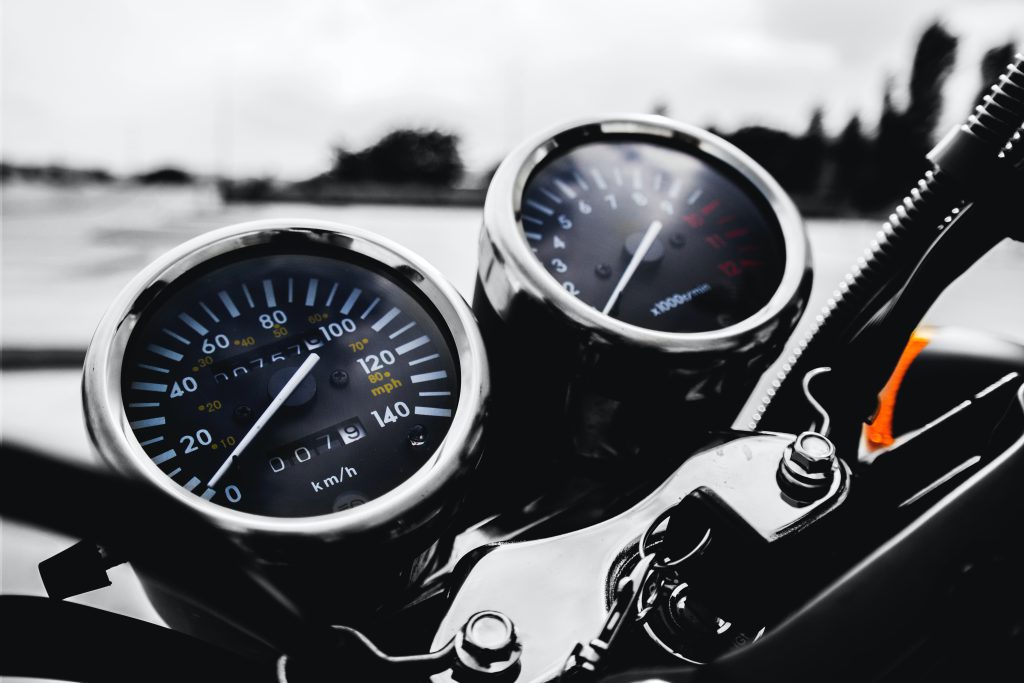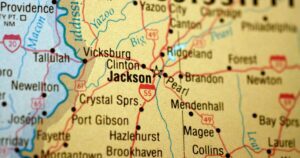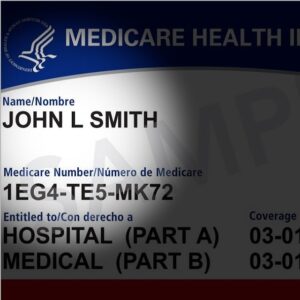Motorcycle dash cams: Do you need one?

Dash cams have grown in popularity since the rise of YouTube and other streaming platforms that allow drivers to upload weird, wonderful, dangerous, and downright terrifying occurrences on and around the roads of the world.
But as well as being great for creating streaming material, dash cams also mean that drivers have direct access to video evidence of any accidents or collisions that can be shown to insurers or legal teams for subsequent claims or cases.
We are going to explore the ins and outs of motorcycle dash cams, what the different options are, and find out whether you need one.
What is a dash cam?
A dashboard camera (dash cam) is an onboard camera that continuously records the view from the front or rear of a vehicle. Dash cams capture vehicle accidents and can provide proof to the police or insurance companies in the event of an injury or damage sustained by a collision.
There are different types of dash cams available that range from around £20 to over £400. We will examine each of the options in detail later. But let’s first jump into whether or not you need a motorcycle dash cam.
Do I need a motorcycle dash cam?
A motorcycle dash cam is not required by law. However, while you don’t technically need a motorcycle cam, you may find yourself in a situation where you wish you did, and there are plenty of benefits to having one.
Motorcycle dash cams:
Can be used as evidence in legal battles or disputes with your motorcycle insurance company.Help to improve the driving of others when they see they are being recorded.Protect you against false claims from car drivers, pedestrians, or other road users.
Why should you get a motorcycle dash cam?
As we just saw, you don’t need a dash cam on your motorcycle, but they can come in handy. We are going to take an in-depth look at just some of the reasons why you should invest in one for your motorcycle.
Lower insurance premiums
Insurance providers are likely to offer you lower insurance premiums if you have a dash cam as it shows them that you are willing to have your driving scrutinised as well as other people’s. It is similar to having a black box installed in your car, which can be used to show your insurer that you are a safe driver.
A dash cam can also provide video evidence to your insurer if they are uncertain about an insurance dispute with another driver.
If you buy a dash cam for your motorcycle, inform your insurance provider as soon as possible, and they should offer you a reduction in your premiums by the time your policy renews.
Legal liability
As well as insurance claims, your dash cam can also be used to provide evidence in legal cases.
If you find yourself in a legal dispute with another driver, pedestrian, or road user after an accident, a dash cam could be vital for offering proof to the police or even in court.
There is even a website, Nextbase, that allows you to submit dash cam footage directly to the police.
Theft and vandalism
Dash cams can be vital in recovering your vehicle from theft or catching the vandals that damaged your bike.
Even if a thief kicks the dash cam off to ensure they can’t be traced, the camera may have already picked up enough video footage to identify them.
Record your rides
A motorcycle dash cam isn’t only useful in tedious legal or insurance disputes, but it is also great for filming your travels and keeping a record of all the trips you take on your bike.
You may want to record your journeys to show your family and friends the trips you have been on. Or you may have a YouTube or other streaming network channel to which you upload your rides and share them with the world.
Whatever the purpose, a dash cam allows you to record your travels and make sure those memories are saved forever.
What types of motorcycle dash cams are there?
You have two main choices when choosing what type of motorcycle cam you want; the helmet-mounted dash cam and the motorcycle-mounted dash cam.
Helmet-mounted dash cam
A helmet-mounted dash cam is a camera that is fixed to your helmet. It presents a first-person point of view of what you can see on the road.
Helmet-mounted dash cams are great because they record everything that you see as you see it. So if, for example, you are involved in an accident that escalates into an altercation with the driver of the other vehicle, your dash cam will record the interaction if you need it for legal reasons.
Similarly, a helmet-mounted dash cam can record around the motorcycle. So if you want to stream your trip to a vlog or video platform, you can show your viewers a wider, panoramic view from the back of the bike rather than just one angle from the front or back.
One of the drawbacks of a helmet cam is that it can be quite unsteady. Because people move around when they drive, and the camera is attached to the body, the footage can wobble, or you may even miss an important on-road event because you were checking over your shoulder.
Likewise, if you leave your bike unattended and it gets vandalised or stolen, a helmet-mounted dash cam won’t be any help in finding the culprit.
Motorcycle-mounted dash cam
A motorcycle-mounted dash cam is a camera that is fixed to the body of your motorcycle. You can have a dash cam fixed to both the front and rear ends of the bike, though a front dash cam should be the priority.
Motorcycle-mounted dash cams are ideal for keeping your bike safe and secure. You can keep your bike parked and left unattended with your dash cam still rolling, and it will record any thieves or vandals that interfere with your bike. If you have the camera feed linked to your phone or computer, you should still be able to pick up footage.
Motorcycle-mounted dash cams are also good for steady and stable footage. Unlike a helmet-mounted camera, motorcycle-mounted cameras stay fixed in one position and don’t move from there. This means that nothing that takes on the road or directly in front (or behind) the vehicle will be missed by the camera.
However, because motorcycle-mounted dash cams are fixed in their place, it also means that they cannot film around the bike. Therefore, if you are filming for streaming purposes and want to show the views around the road, a motorcycle-mounted camera is perhaps not the best option.
It also means any interactions or alterations with other drivers or road users away from the bike will be missed unless they occur directly in front of the vehicle.
What to look for in a dash cam?
There are several different factors and features to consider and compare when you buy a dash cam. So let’s take a look at some of the most crucial ones.
Camera size
There are two schools of thought regarding the size of dash cams.
One says that smaller is better because it is less likely to be seen by thieves and vandals, which means the camera is unlikely to be stolen, and it may be left on if the vehicle is stolen, allowing you to track the camera and the bike. It also means the camera will have less impact on the driver’s view of the road, making it a safer option.
The other school says that bigger is better. This is because a bigger camera will likely have more features and be able to record a wider section of the road. It may also make other drivers and road users behave safer as they can see they are being recorded.
Video quality and resolution
Camera resolution refers to the quality of the image and video it records. The higher the camera resolution, the better the quality.
If you use your dash cam for streaming or storing personal memories, you may want to get a camera with a higher resolution. Whereas if the dash cam is purely functional and is only used for legal or insurance reasons, you may not need to have such good quality.
Another factor regarding quality for you to consider is the dash cam’s low light ability. Some cameras can pick up very little without external lighting, while others are designed to record in the dark.
This feature may or may not be relevant to you depending on where you drive your bike and when you drive it. For example, if you always drive through well-lit city streets, you may not need it. But if you regularly ride your motorbike during the winter or at night through poorly-lit streets, it might be useful.
Dual-lens
Dual-lens dash cams record both the rear and front end of your motorcycle, offering you maximum coverage when you drive. Dual-lens cameras are generally more expensive than single-lens, so you need to consider whether it is worth it for you to invest in the additional coverage of a rear camera or not.
GPS and speed
An in-built GPS means your dash cam will monitor your location and help you map out routes and trace your bike if it gets stolen. GPS also means your dash cam can calculate your speed, which can be helpful in the event of an accident.
Memory size
The amount of memory your dash cam can store is an important factor. You may need more memory if you are going on a long trip and don’t have the means to upload your footage onto an external drive regularly. If you only use your bike for short trips and regularly upload the footage onto an external drive, you probably won’t need a dash cam with large amounts of memory.
You can change the memory capacity of your dash cam by getting a different SD memory card.
Parking protection
Parking protection is a feature in dash cams that uses motion detection to monitor activity around the bike and start recording if there is significant movement. This is a great feature for security enhancement as it can capture thieves or vandals the minute they interfere with your motorcycle.
Parking protection is enabled by a G sensor built into the dash cam. A G sensor measures movement across the axes of up/down, left/right, and forward/backward. With this information, the dash cam can identify sudden or severe movements (such as heavy braking) or impacts.
The G sensor can also ensure that the material recorded after an impact or severe movement is not overwritten, so you know you won’t lose any sensitive footage you may need in the future.
WiFi and connection
Some dash cams have a WiFi connection available, so you can review footage or adjust the camera settings from your computer or smartphone. You may also be able to adjust the alignment of your camera if you have connected it to another device by using the device as a remote control.
Price
Dash cams can cost as little as £20 and as much as over £400. You should be slightly wary of those on the very cheap end of the scale, but that is not to say you can’t get a reliable budget dash cam that will tick all the boxes you need.
How much you spend ultimately comes down to personal preference. Do you want a dash cam with multiple features and great quality? Or are you happy with a dash cam that simply gets the job done?
Think about what you want your dash cam to do and how you want to use it, and then research different models that match your requirements and fit within your budget.
Summary
A motorcycle dash cam allows you to record and store your own footage of the trips you take on your bike. This can be very useful for recording motorcycle accidents as it provides video evidence that you may need to send to your insurer or your lawyers to be used in a court of law. Dash cams can also be great for recording your journeys for your memories or sharing with your friends, family, and the wider world.
Also read:
Motorcycle security: 9 tips to keep your bike safe







